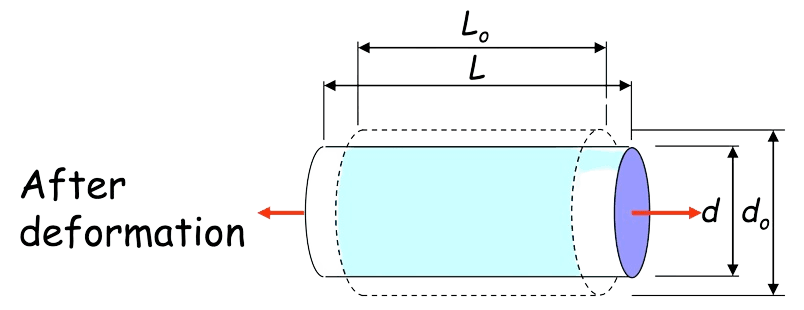Axially loaded members
Axial loading refers to the application of a force along the axis of the member.
Stress and strain
Axial stress is the stress that is parallel to the cross-sectional area of the member. It is given by:
Where is the force applied, and is the cross-sectional area of the member. Note that .
When a force is applied off-centre to the member, the stress at each end is given by:
Where is the width of the member, is the depth of the member, and is the eccentric distance from the centroid of the member to the point of application of the force.
The sign is used to denote the maximum and minimum stress on opposite sides.
Axial strain is the ratio of the change in length to the original length of the member. It is given by:
Where is the change in length, and is the original length of the member.
Materials
Poisson's ratio is the ratio of lateral strain to axial strain , given by:

The lateral strain is .
Hydrostatic pressure
The water pressure acting on any surface is always perpendicular to the surface, and the pressure is given by:
Where is the density of water, and is the depth of the water.
Hence, we can see that the water pressure increases linearly with depth.
The load exerted on a slanted surface by water pressure F is given by and located at:
Where is the depth of water, is the width of the volume, and is the length of the surface.
